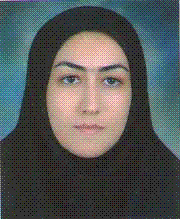Seyede-Saba Ashrafmansouri
Seyedeh‐Saba Ashrafmansouri
Education:
PhD Student in Chemical Engineering, Isfahan University of Technology, Iran
Thesis: Mass Transfer in Nanofluid systems
MSc in Chemical Engineering, Shiraz University, Iran
Thesis: Modeling gas solubility in ionic liquids with the SAFT‐γ group contribution
method
BSc in Petrochemical Engineering, Shiraz University, Iran
Thesis: Modeling of CO2 solubility in ionic liquids
Email: s.ashrafmansouri@ce.iut.ac.ir
Abstract of PhD Thesis (Mass Transfer in Nanofluid systems):
Nanofluids are colloidal dispersion systems, consisting of nanometer‐sized particles
dispersed in a base fluid. These systems have received great attention to enhance heat
transfer in various technological applications. There are several literature researches
that have demonstrated the enhancement in thermal conductivity by nanoparticles.
Some of these studies believe that this enhancement is the result of Brownian motion
of nanoparticles and/or the nanoscale convection induced by the Brownian motion.
However, unlike the thermal properties, much less researches have dealt with the study
of mass transport in nanofluid systems. Moreover, the results of mass transport
measurements obtained by these researches are inconsistent. Some groups have
reported an enhancement in mass diffusion and some of them have obtained very less
or no enhancement. These controversial results show that more researches are needed
to understand the mechanism of mass transport in nanofluids. This thesis deals with
understanding the main mechanism of mass transfer in nanofluid systems. To
investigate the effect of nanoparticles on diffusion, mass diffusivity coefficient in
nanofluid systems is measured by a reliable method. Yet this measurement is very
challenging due to the difficulty in nanoscale flow visualization. Moreover, recent
studies by fluorescence correlation spectroscopy (Nanopart Res. 2011, 13, 6313–6319)
and microfluidic setup (Nano Lett. 2010, 10, 665‐671) show that some previous
researches on mass diffusivity measurements have ambiguities because of paying no
attention to the formation of nanoparticle complexes and also measuring chemical
diffusion instead of tracer diffusion. It is expected that the results of an accurate and
reliable measurement can express the major mechanism and indicate the effect of
phenomena such as Brownian motion and the micro and nano‐convections on the
diffusion and the convective mass transfer in nanofluid systems. In addition, in this
thesis, the application of nanofluids in liquid‐liquid extraction systems is investigated.
Since most researches on mass transfer in nanofluids are limited to gas‐liquid systems,
liquid‐liquid extraction have high potential to be studied, especially because of its vast
applications in various fields. This study is applied on the bubble column system and the
influence of some parameters such as bubble geometry, surface tension, surfactants,
nanoparticle existence in dispersion and/or continuous phases, hydrodynamic effects
and etc is investigated.

